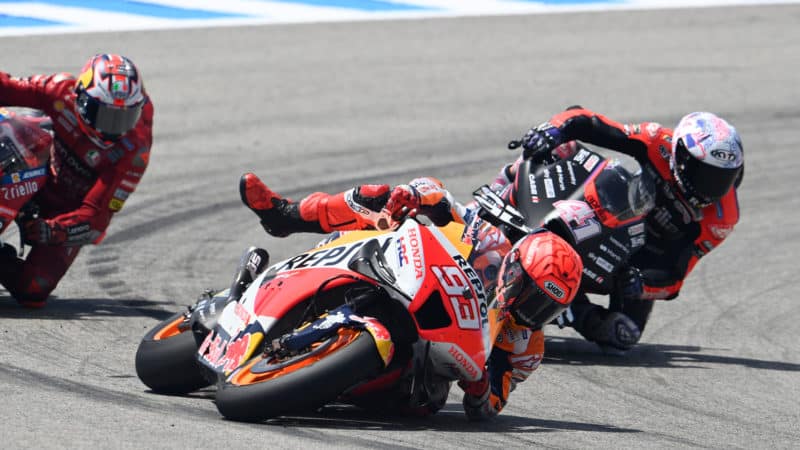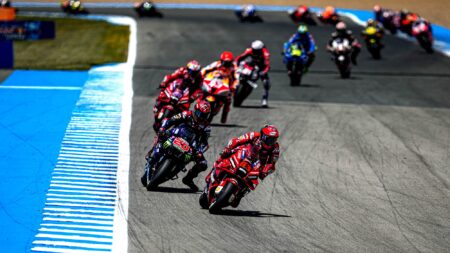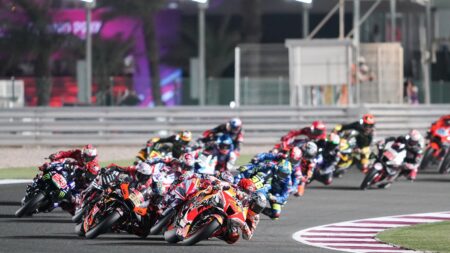I recently compared changes of position among the top three at five different circuits in 2017 and 2021, which revealed a 25% reduction in overtakes.
“It’s even more difficult to overtake now in MotoGP, with the aerodynamics, the rear devices and all these things,” said Márquez at Jerez on Friday. “Normally in the race, when you take the position, you stay there.”
MotoGP owners Dorna have spent the last dozen years rewriting the technical rules to narrow the gap between the fastest and slowest bikes, by making all the bikes basically the same, with 81mm-bore four-cylinder engines, same-for-everyone electronics and same-for-everyone tyres. The gap is now much, much narrower than it’s ever been, which is why the racing is closer than it’s ever been.
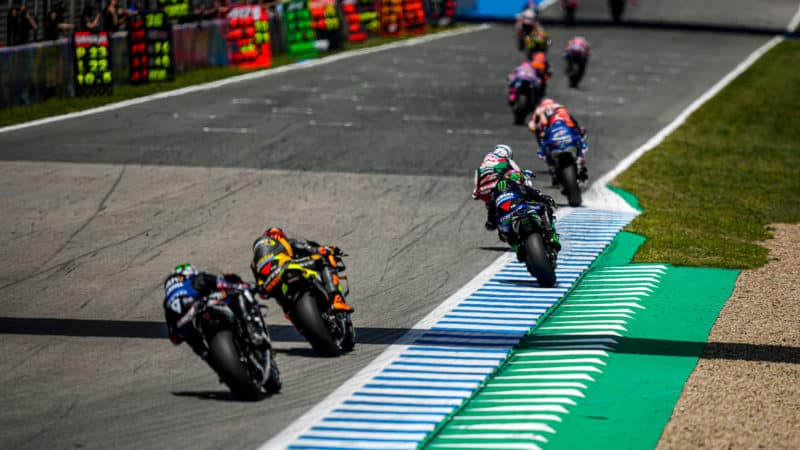
The mid-pack accelerates onto the Jerez start/finish. There was more overtaking here than at the front but not much
Yamaha
But there is nothing like the amount of overtaking there was a few years ago, because the bikes are becoming too good – they’re running lots of downforce aero, they’re using shapeshifters, the factories have got their heads around the spec software and so on.
Improved torque-demand maps, wings and shapeshifters make the bikes accelerate better, so the more talented riders struggle to make the difference exiting corners to give themselves more speed down the straights. The wings also make the bikes more stable on the brakes, so riders can brake later, so it becomes more and more complicated for riders to overtake.
Witness the long battle between Márquez, Espargaró and Miller. They were nose to tail, lap after lap, but none of them could pull off a pass until the last few laps. Usually at Jerez riders can divebomb each other at the Turn 6 and Turn 13 hairpins but even this proved just about impossible.
Many 800 races were so boring that I nearly broke my jaw yawning
The downforce aero also makes overtaking difficult because the motorcycles now create such a large vacuum in their wake that it’s impossible for a rider to brake behind another rider, because there’s no air resistance helping him to stop and he’s got no downforce on the front tyre. Plus there’s dirty air too, washing around either side of the vacuum. All in all, this makes it difficult for riders to get close enough to set up a pass on the brakes.
And then there’s the issue of front-tyre temperature. Three-hundred horsepower engines create a huge amount of heat, which trails behind them, warming the front tyre of any rival trying to get on the rear wheel of the rider in front. When the tyre gets hot its performance drops. Also, tyre pressure increases, which changes its profile, reducing grip.
Basically, it’s a perfect storm, because, as seven-times MotoGP king Valentino Rossi once said, “overtaking is the most important part of our sport”.
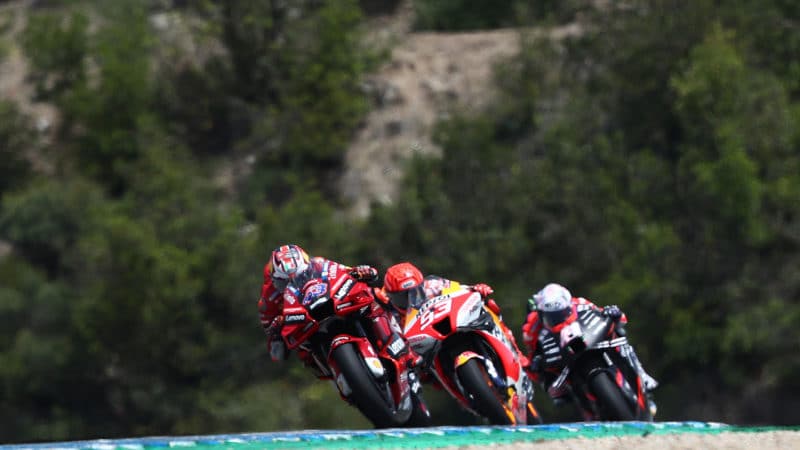
Miller, Márquez and Espargaró were like this for 20 laps, unable to make a pass, even into Jerez’s hairpins
Ducati
For different reasons MotoGP is getting back to where it was with the 800s at the height of their development. Those bikes had tailor-made factory software that adjusted traction control and so on during the race and they had Bridgestone tyres, which worked in a certain way that transformed the motorcycles into one-line bikes. Many 800 races were so boring that I nearly broke my jaw yawning.
Is any of this a real problem?

